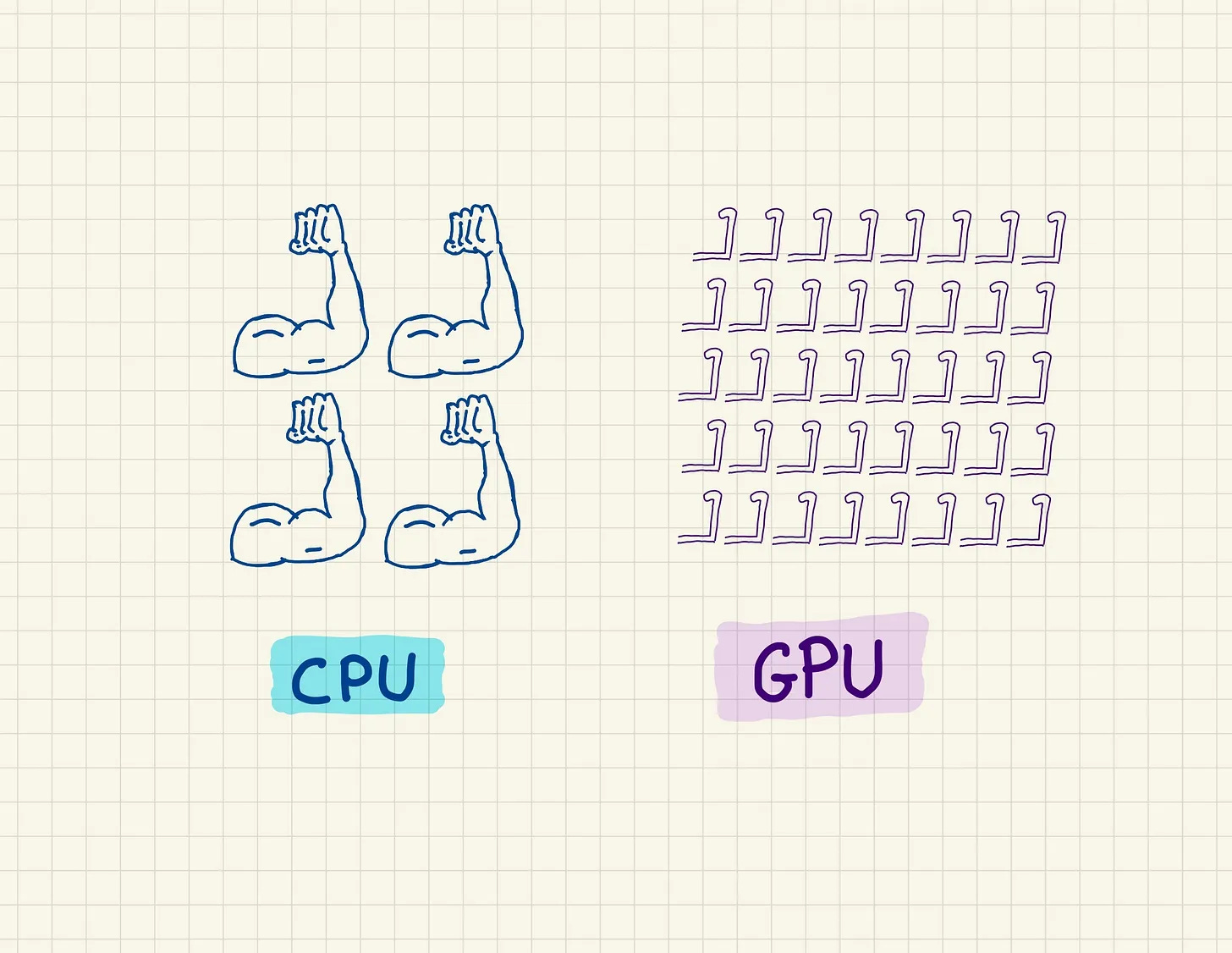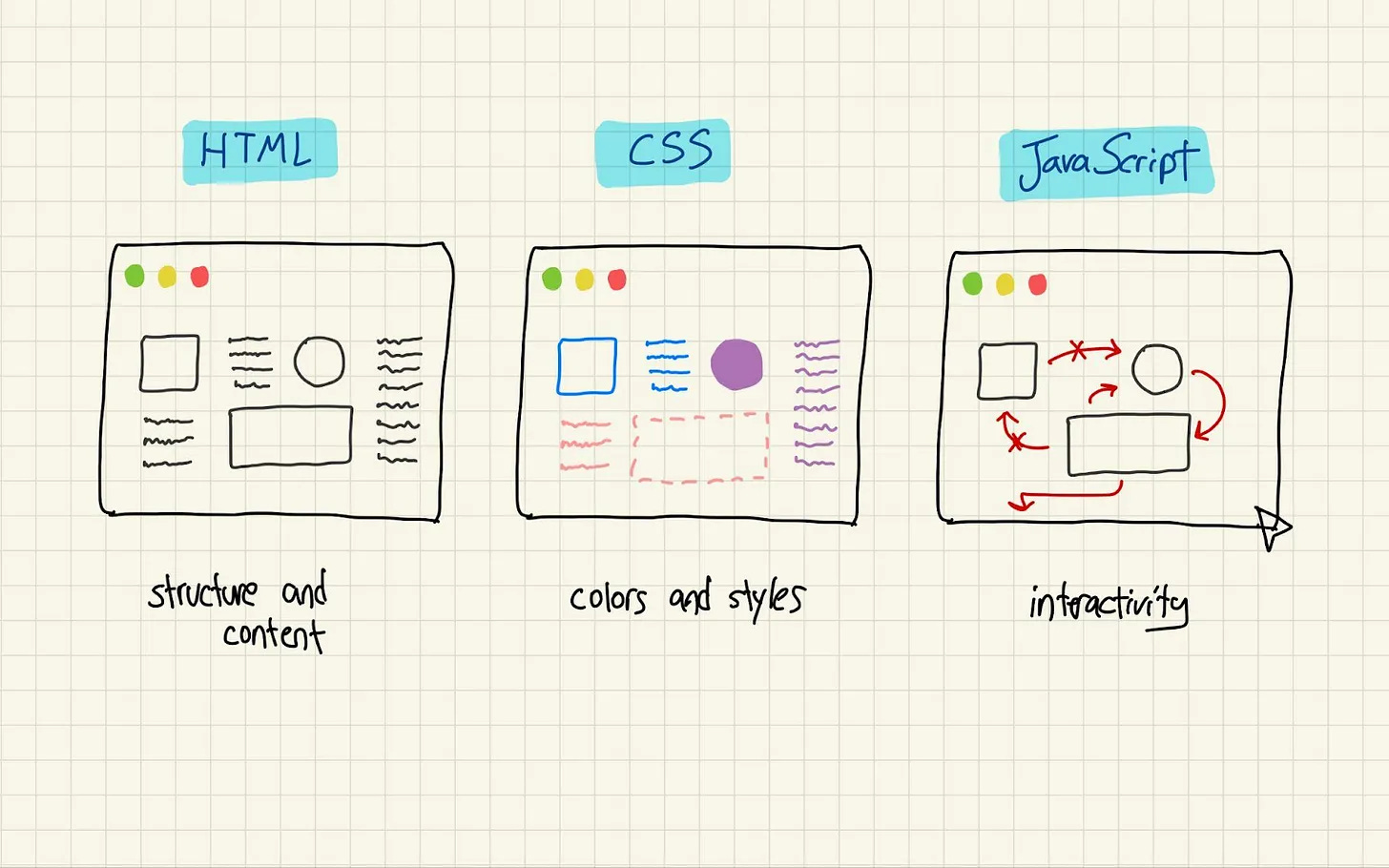Technically Monthly (August 2025)
Why GPUs are a great fit for AI, how generative models actually work, and how JavaScript became the most popular programming language in the world.
Hello illustrious Technically readers,
This is the fourth ever Technically Monthly, and it’s a…well, it’s actually a pretty normal one. Here’s what’s new:
2 new explainers: one on how generative models actually work, and one on why GPUs are the backbone of modern AI
A simple guide to JavaScript, the most popular programming language in the world
A foundational term worth revisiting: the CPU (especially now that we’ve covered GPUs)
New on Technically
The post about GPUs
Available as a paid preview on Substack, and now in its permanent home in the AI, it’s not that Complicated knowledge base.
A smart English man once argued that our entire economy is dependent on mega companies spending hundreds of billions a year on buying GPUs from another mega company (NVIDIA). A less smart American man (me) will explain to you what these GPUs actually are, how they work, and why people seem to be throwing money at them to train huge AI models.
This post explains:
The difference between CPUs and GPUs
What makes GPUs so well-suited for running billions of simple operations at once
Why training and running GenAI models is a great fit for GPUs in particular
I also (lightly) touch (tap?) on the growing demand for AI chips, why supply is so tight, and what alternatives like Groq and TPUs are bringing to the table.
What is JavaScript?
Available free to all readers, and now in its forever home in the Building Software Products knowledge base.
Here’s a sentence nobody would have believed 10 years ago. JavaScript is the most popular programming language in the world! And not without controversy, because it’s also one of the weirdest and most inconsistent ones. This post traces how JS got so popular, from humble beginnings in the 90s to powering full web apps today.
I cover:
How JS works with HTML and CSS to build web pages
Why V8 and Node.js helped it escape the browser
How TypeScript allegedly cleaned up the JS mess (and made it faster + safer)
Also featuring fun additions like: house-building metaphors, “Java ≠ JavaScript” alerts, and an ode to the glory days of jQuery.
What is Generative AI really?
Available as a paid preview on Substack, now in its permanent home in the AI, it’s not that Complicated knowledge base.
Asking what GenAI is is sort of like asking what’s inside a hot dog. Do you really want to know? Yes? OK then, I will tell you. This post dives into:
The difference between old school ML and current day GenAI
How transformers generate text (one word at a time)
How diffusion models generate images (one pixel at a time)
Plus, a visual explanation using tortellini that I made from scratch. It’s insane how much value you are getting here.
From the Universe: the CPU
Let’s wrap with a foundational term from the Technically universe of technical concepts: the CPU, or central processing unit—especially useful if you’ve ever wondered what makes it different from a GPU:
CPU stands for Central Processing Unit, and it’s what tries to understand and execute your software’s instructions. It does basic stuff like arithmetic and logic (if this, do that, etc.). A lot of computers also have a GPU (Graphics Processing Unit), which does the same thing as a CPU but is built for specific tasks.
Coming up next month
Thanks for reading this edition of Technically Monthly. On deck for August:
The world of AI model architectures—transformers, RNNs, CNNs, and how they actually differ.
Why software docs are so important, and how great teams build them.
What different open source licenses actually mean—what they allow, what they restrict, and why open source projects choose different licenses.
PS: Technically for Teams
If you run a team of analysts or a team of sellers and are looking to level up your team’s technical fluency, respond to this note to discuss how Technically can help.





